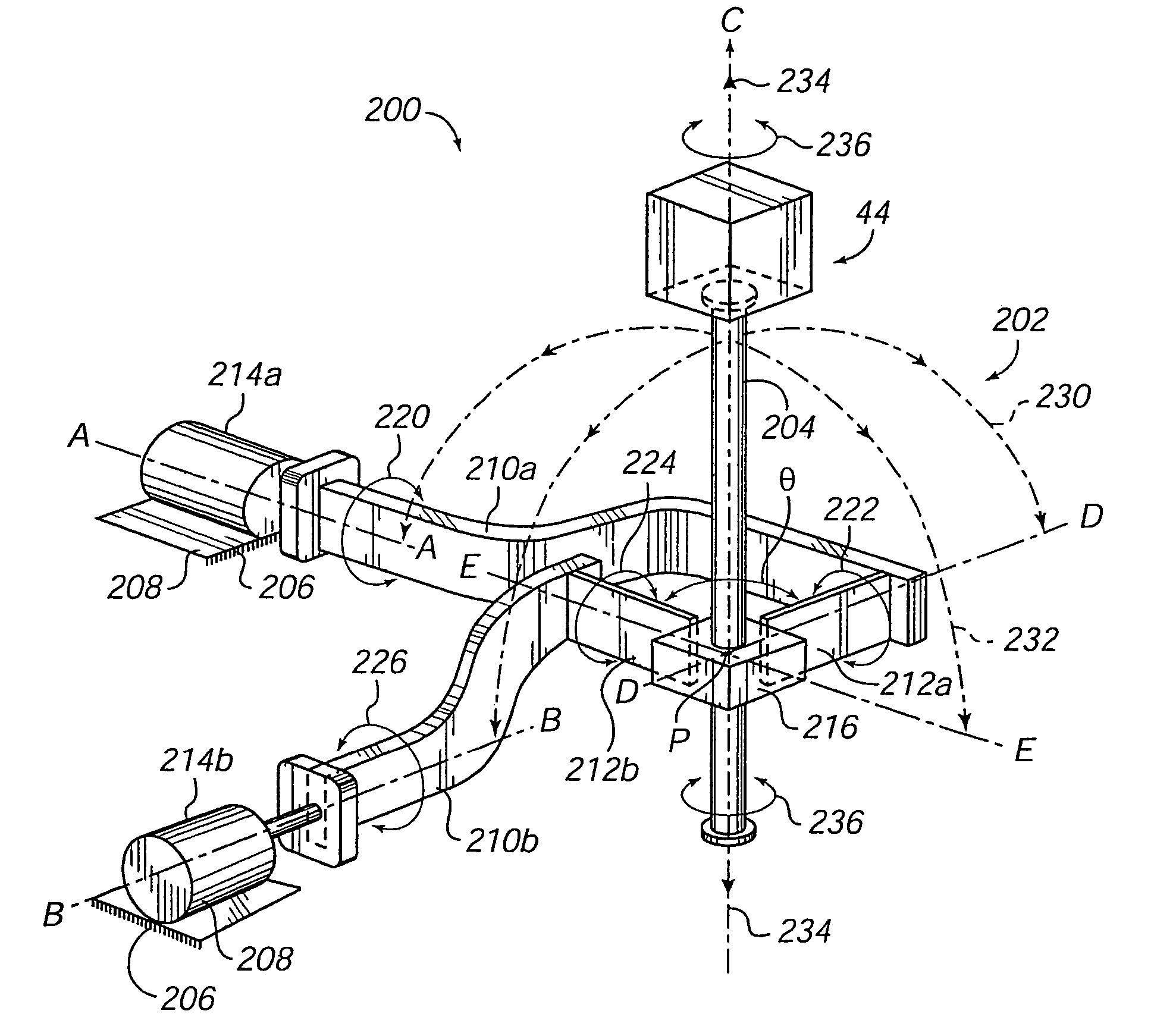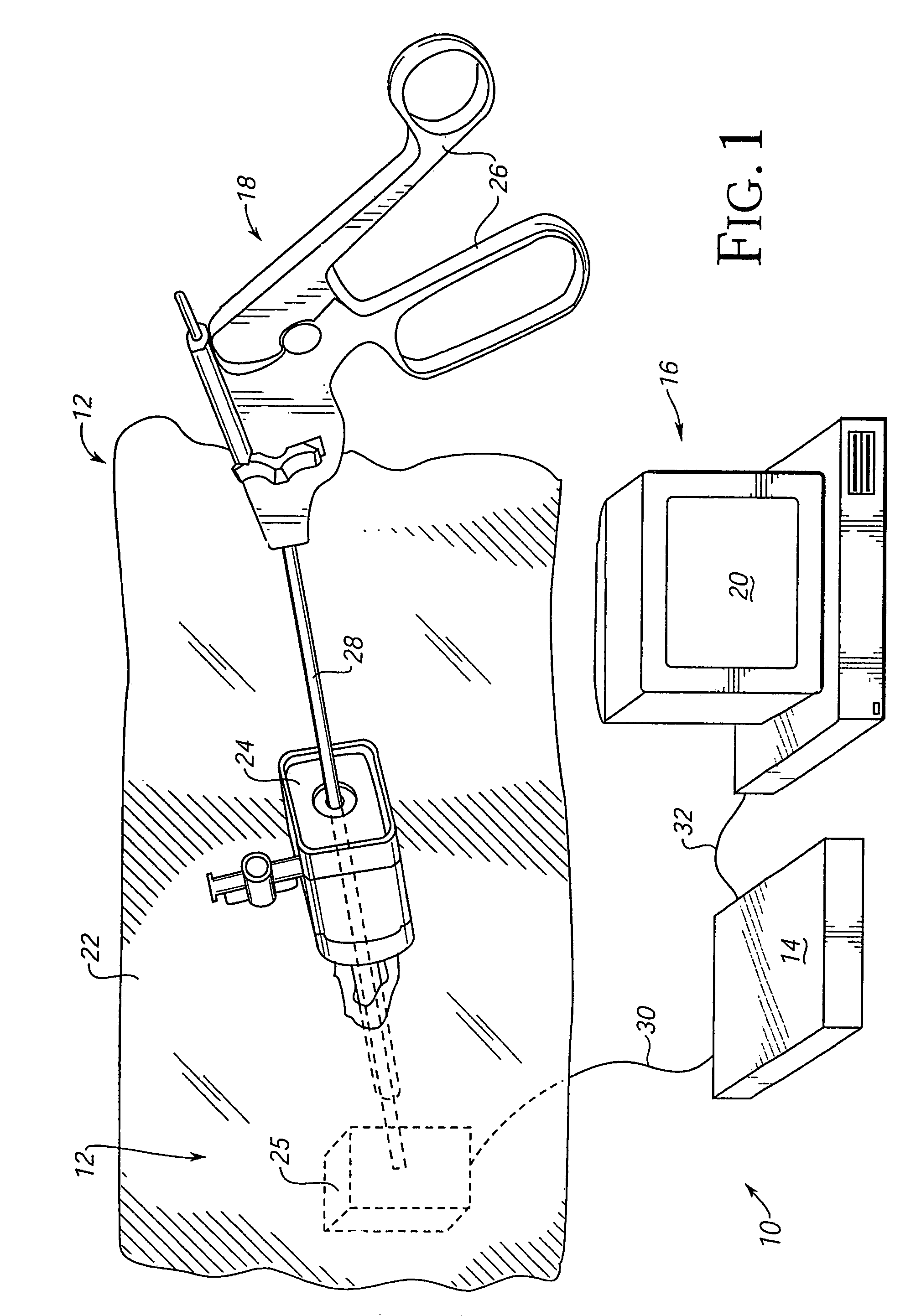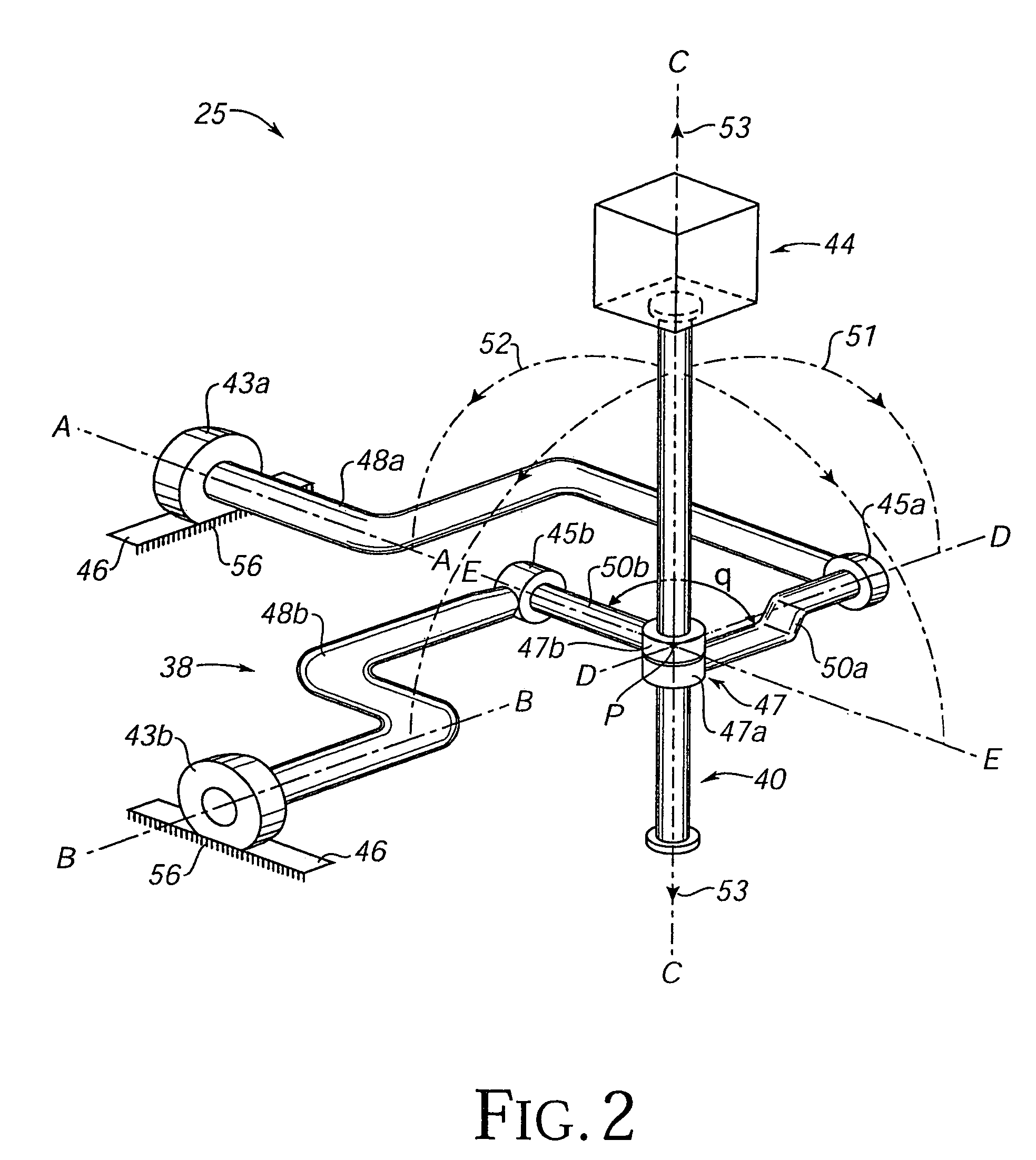Computer interface apparatus including linkage having flex
a computer interface and linkage technology, applied in the field of interface devices, can solve the problems of not providing not being able to experience an entire sensory dimension in virtual reality simulations, and unable to provide force feedback to a user, etc., to achieve high-reality force feedback, low cost, and low cost
- Summary
- Abstract
- Description
- Claims
- Application Information
AI Technical Summary
Benefits of technology
Problems solved by technology
Method used
Image
Examples
embodiment 14
[0064]The electronic interface 14 is a component of the human / computer interface apparatus 12 and may couple the apparatus 12 to the host computer 16. Electronic interface 14 can be included within a housing of mechanical apparatus 25 or be provided as a separate unit, as shown in FIG. 1. More particularly, interface 14 is used in preferred embodiments to couple the various actuators and sensors of apparatus 25 (described in detail below) to computer 16. One suitable embodiment of interface 14 is described in detail with reference to FIG. 9, in which the interface can include a dedicated interface card to be plugged into computer 16. A different embodiment 14′ of interface 14 is described in detail with respect to FIG. 20, in which the interface includes a microprocessor local to the apparatus 12 and can be coupled to computer 16 through a slower, serial interface or a parallel interface.
[0065]The electronic interface 14 can be coupled to mechanical apparatus 25 of the apparatus 12 ...
embodiment 300
[0180]FIGS. 22d and 22e show an alternate embodiment 300′ of the interface apparatus 300 shown in FIGS. 22a and 22b. Interface apparatus 300′ provides two linear degrees of freedom to object 44 so that the user can translate object 44 along the X axis, along the Y axis, or along both axes (diagonal movement). Apparatus 300′ includes a circuit board 308 that includes voice coil actuators 310a and 310b and guides 318. These components operate substantially similar to the equivalent components in apparatus 300.
[0181]A main difference between the embodiments of FIGS. 22a-b and FIGS. 22d-e is that object 44 is rigidly coupled to circuit board 308. Thus, when circuit board 308 is translated along axis X and / or axis Y, shown by arrows 320a and 320b, object 44 is translated in the same directions, as shown by arrows 350 and 352, respectively, providing the object with linear degrees of freedom. Thus, both user object 44 and circuit board 308 move in linear degrees of freedom. This is unlike...
third embodiment
[0188]FIG. 23c is a detailed view of the rollers and drive bar of the friction drive 360. Drive bar 366 is preferably round or square wire that is flexible in at least one direction. Two passive rollers 376a and 376b can be coupled together and to drive roller 374 by non-tensile connections 380. The flexibility in drive bar 366 allows the drive bar to bend around the rollers and creates a higher friction, thus preventing slippage of the drive bar.
PUM
 Login to View More
Login to View More Abstract
Description
Claims
Application Information
 Login to View More
Login to View More - R&D
- Intellectual Property
- Life Sciences
- Materials
- Tech Scout
- Unparalleled Data Quality
- Higher Quality Content
- 60% Fewer Hallucinations
Browse by: Latest US Patents, China's latest patents, Technical Efficacy Thesaurus, Application Domain, Technology Topic, Popular Technical Reports.
© 2025 PatSnap. All rights reserved.Legal|Privacy policy|Modern Slavery Act Transparency Statement|Sitemap|About US| Contact US: help@patsnap.com



